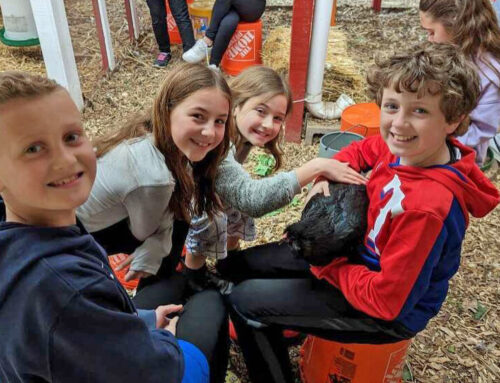Colleen Ritchie, who lives near White Rock Lake, has three neighbors whose small animals — one miniature dog and two cats, respectively — have either vanished or been killed. Coyotes are the prime suspects. Ritchie hasn’t lost any loved pets (she’s a self-described “dog person”) so her perception isn’t clouded with emotion. She lives near the lake because she loves the natural, wooded area complete with its many pedestrians, birds, bugs and wildlife.
“There’s give and take wherever you choose to live,” Ritchie says. “If you made your home near a fault line because you love Southern California, you’d be prepared for earthquakes. If you live near White Rock Lake, you should expect the occasional encounter with wildlife, both the beautiful and terrible.”
In most cases, preparation begins with the proper understanding of our situation. Here in our urban oasis, there is an inconspicuous corps of well-informed volunteers that aims to educate the community and, essentially, foster a loving relationship between man and nature. They are the North Texas Master Naturalists, a chapter of the Texas Master Naturalist organization. The group has about 125 members, several from our neighborhood. Most of them will tell you there’s much more to nature than meets the eye — and then they will zealously fill you in on what you’re missing.
Take Jay Forrester, for instance, a two-year member. When talking about the coyotes’ culpability in the untoward fates of small pets, Forrester launches into a lecture full of facts and arguments in defense of the ill-reputed beasts:
You are 100 times more likely to be attacked by a hummingbird or a blue jay than a coyote. (“They can’t kill, but they sure can draw blood,” he says.) Eighty percent of outdoor cats killed are run over by a car. Because coyotes are opportunistic, they will take advantage of a dead cat. You might see the coyote eating your pet, but that doesn’t necessarily mean the coyote killed it. Outdoor cats eat birds — an average of three a day if they’re out all day. When you have a cat in this situation, it becomes part of the circle of life. It is a predator and it is prey.
Or it might be another creature altogether that killed the cat.
Red-tailed hawks are known to snatch up animals twice their size, Forrester says. Witnesses confirm: One White Rock-area resident says she has seen a hawk swoop down and nab a squirrel. The cat-killer could also be an owl.
“We don’t usually see them because they are nocturnal, but owls are definitely out there,” Forrester says.
Either of these birds of prey could easily make a small cat or a Chihuahua its dinner.
Coyotes, hawks and owls aren’t the only creatures we’re dealing with here in our urban oasis.
“There are so many animals that would surprise most people,” Forrester says: More than 210 different types of birds; minks; foxes; armadillos; and poisonous water moccasins, just to name a few.
“Back in the day, there was an alligator out there,” Forrester says. “But if we saw one today, I’d recommend that it be removed — those things will ambush people.”
But being a North Texas Master Naturalist is not all about throwing around interesting morsels of expertise.
Sure, master naturalists such as Forrester are full of intriguing information about all things flora and fauna. But really they are servants of the community, says Fred Burrell of the Dallas County AgriLife Extension.
Speaking at a monthly North Texas Master Naturalist meeting, Burrell praises the group, pointing out the valuable functions of the master naturalists: In 2007, volunteers provided more than 8,000 volunteer service hours to Dallas County, valued at more than $150,160 and reaching 30,000 people with educational information, he says.
Said education is geared to facilitate peaceful coexistence between humans and nature. The educational programs touch on topics such as storm water runoff, pollution, erosion control, flooding, water quality and quantity, loss of wildlife habitat and the need for green space, Burrell says.
“Research-based education is critical to Dallas County’s stability,” he says.
And their work reaches beyond Dallas. Texas Parks and Wildlife has commissioned local master naturalists to collect data relevant to global warming and environmental trends.
The members seem to have a knack for turning this type of work into fun.
Barbara Turner leads an “amphibian watch” at White Rock Lake the fourth Friday of each month.
“The watchers are really listeners,” Turner says. “We meet at dusk and play a CD of frog calls. Then we walk around the area listening for and identifying the various species.”
It’s not always easy.
“Sometimes we’ll sit under a tree and play the CD over and over trying to get the frog to respond again so we can identify him,” she says. “Poor guy probably thinks his mate is down here, but it’s just us.”
If it sounds silly, know this: There’s reason for the madness.
“Amphibians are one of the first indicators of water quality,” Turner says.
Texas Parks and Wildlife uses “nature trackers” like Turner and her group to collect data they can use to “figure out what’s going on environmentally,” Turner says.
Attendance at the monthly amphibian watch ranges from two to 10 people, depending on the weather and “what Friday night football games are going on,” she says with a laugh.
But before Turner could lead, she had to learn. All master naturalists must complete a curriculum determined at the state level.
Hopefuls must participate in an approved chapter training program with a minimum of 40 hours of combined field and classroom instruction; obtain eight hours of approved advanced training; complete 40 hours of volunteer service within the first year; and must repeat, through their local chapter, eight hours of training and 40 hours of service each subsequent year.
Members of the nature-loving group are committed to various sub-interests, but at the heart of it all, they’re simply obsessed with the wild. Instead of retreating into the woods or the Alaskan wilderness, they’ve harnessed their fanaticism and used it to quietly serve our community.
In fact, Forrester, a lifelong nature aficionado, says he’s surprised how long it took him to hear about the organization.
“I couldn’t believe the Master Naturalists had been around 10 years by the time I found them. They are a quiet group,” he says. “It’s almost like a really cool secret club.”





